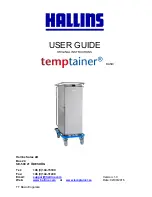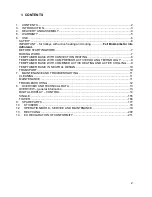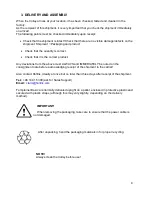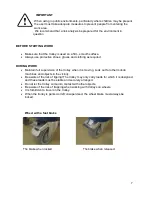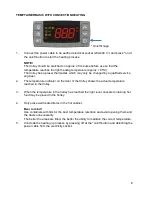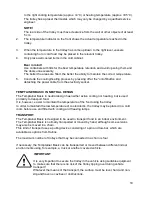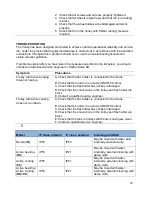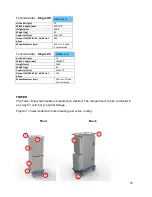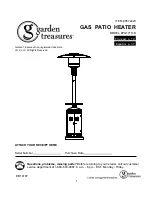
10
to the right cooling temperature (approx. +4°C) or heating temperature (approx. +85°C).
The trolley has a preset thermostat, which may only be changed by a qualified service
engineer.
NOTE!
The rear side of the trolley must have clearance from the wall or other objects of at least
5 cm.
2.
The temperature indicator on the front shows the actual temperature reached in the
trolley.
3.
When the temperature in the trolley has come up/down to the right level, vessels
containing hot or cold food may be placed in the relevant trolley.
4.
Only place well cooled items in the cold cabinet.
Bear in mind!
Use containers with lids for the best temperature retention and avoid opening them and
the doors unnecessarily.
The better the areas are filled, the better the ability to maintain the correct temperature.
5.
Conclude the cooling/heating process by pressing off at the *on/off-button and
detaching the power cable from the electricity socket.
TEMPTAINER BASIC IN NEUTRAL DESIGN
The Temptainer Basic in neutral design has neither active cooling nor heating, but is used
primarily to transport food.
It is, however, easier to maintain the temperature of the food using the trolley.
In order to maintain the low temperature of cooled items, the trolley may be placed in a cold
room before use and fitted with cooling and freezing lamps.
TRANSPORT
The Temptainer Basic is designed to be used to transport food in an indoor environment.
The Temptainer Basic is normally transported or moved by hand, although some versions
may also be moved in a chain.
This kind of transport uses a pulling device consisting of a pin and tow-bar, which are
available as options from Hallins.
The maximum number of trolleys that may be connected in a chain is four.
If necessary, the Temptainer Basic can be transported or moved between different indoor
environments using, for example, a truck or another covered vehicle.
IMPORTANT
It is very important to secure the trolley in the vehicle using suitable equipment
to make sure that there is no risk of the trolley tipping over during vehicle
transport!
Whatever the means of the transport, the surface must be level, hard and non-
slip and have no cavities or obstructions.

